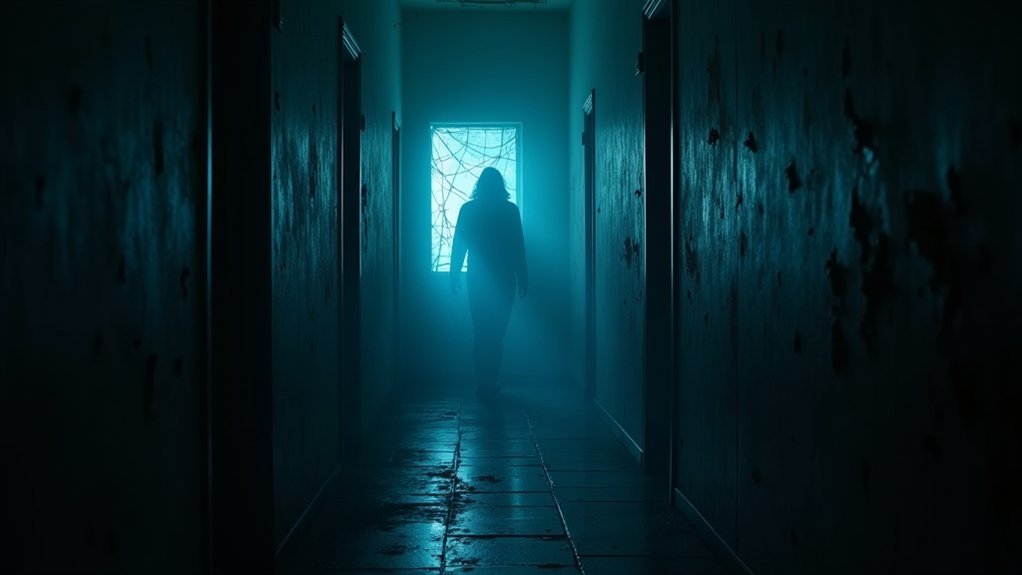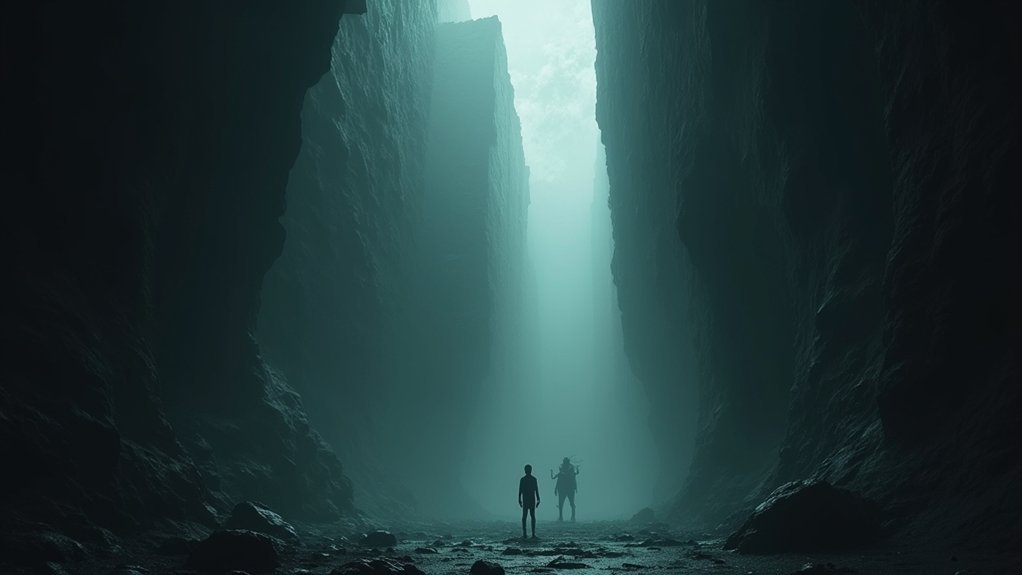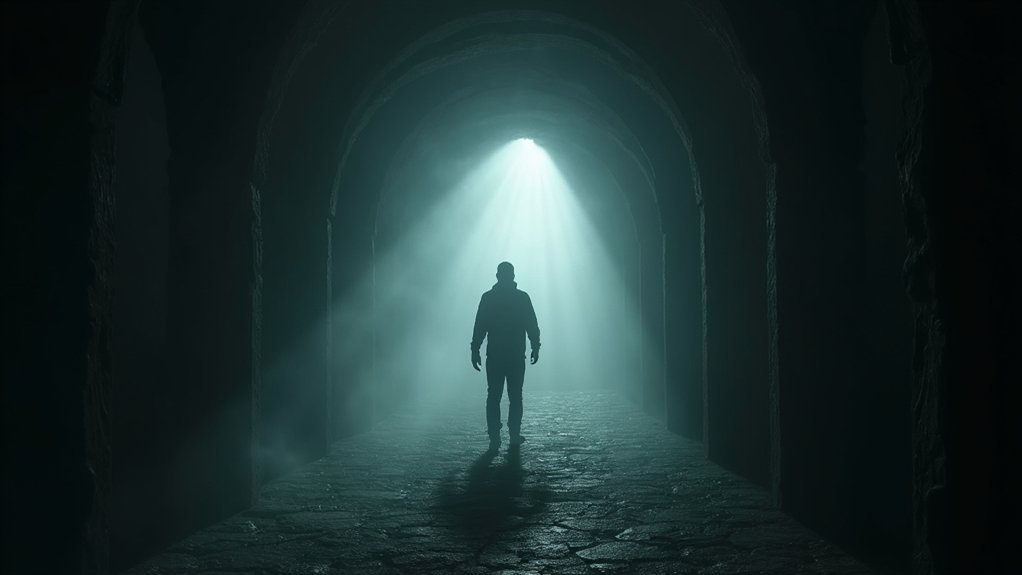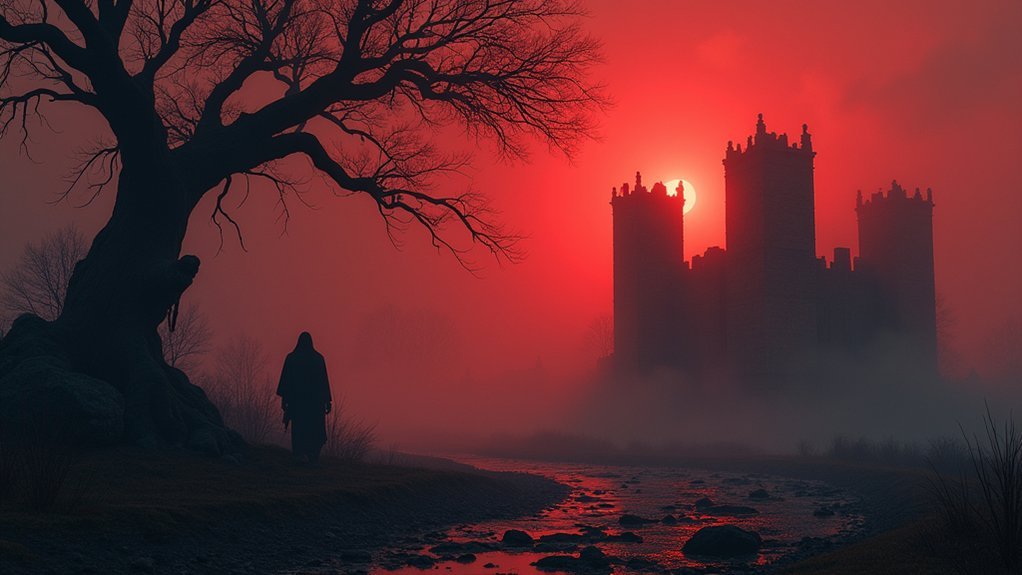You’ll experience heart-pounding terror in five exceptional VR horror games that masterfully exploit spatial audio to manipulate your emotions. These adventures use binaural technology and three-dimensional sound positioning to create genuine presence of lurking threats, while strategic silence amplifies dread before delivering unexpected jump scares. Whispered footsteps and haunting audio cues transform exploration into nerve-wracking nightmares, enhanced by haptic feedback that synchronizes vibrations with environmental sounds. Discover how these sophisticated audio techniques elevate each spine-tingling encounter.
Immersive Soundscape Design in VR Horror Environments

The whisper of footsteps echoing through empty corridors transforms your VR horror experience from visual spectacle to visceral nightmare. Immersive soundscapes work alongside dynamic sound design to manipulate your emotions, creating layers of ambient tension that keep you constantly unsettled.
Haunting audio cues pierce the silence, transforming your VR experience from mere entertainment into a heart-pounding descent into terror.
You’ll notice how strategic silence amplifies your sense of dread—those quiet moments before something terrible happens become unbearable.
Positional audio tracks your every movement, making threats feel genuinely present in your space. Sound effects don’t just accompany the horror experience; they drive it.
When you hear a distant growl or creaking floorboard, your body responds instinctively. This psychological impact transforms simple audio cues into powerful tools of fear, turning your virtual environment into a believable nightmare that haunts you.
Binaural Audio Technology for Enhanced Fear Response
Beyond basic positional audio lies binaural audio technology, which reconstructs sound exactly as your ears would naturally perceive it in real space. This immersive horror technique uses dual microphones to capture three-dimensional soundscapes that make you hyper-aware of approaching threats.
You’ll detect subtle footsteps behind you, whispers from dark corners, and breathing patterns that indicate lurking dangers. The technology triggers stronger emotional responses than traditional audio, amplifying your fear and tension during critical moments.
Horror gaming developers strategically place binaural cues to deliver devastating jump scares when you least expect them. Your brain processes these realistic audio signals naturally, keeping you constantly alert and responsive.
This heightened awareness transforms routine exploration into nerve-wracking experiences where every sound could signal impending doom.
Three-Dimensional Sound Positioning and Player Disorientation

How does your brain react when threatening sounds seem to circle around you with pinpoint accuracy?
Three-dimensional sound positioning creates an immersive audio environment that deliberately triggers disorientation in horror games. Your mind struggles to process sounds coming from unexpected directions, making you vulnerable to fear and anxiety.
Developers exploit this psychological weakness by layering ambient sounds with directional echoes that seem to follow your every move. When footsteps approach from behind or whispers emerge from darkened corners, you can’t help but feel hunted.
This sophisticated audio technology transforms simple gameplay into spine-tingling experiences. The horror genre relies heavily on these spatial techniques, keeping you constantly alert and emotionally invested in your virtual survival.
Haptic Feedback Integration With Spatial Audio Systems
While your ears process the eerie whispers creeping closer, haptic feedback jolts through your controller like a phantom heartbeat against your palms.
This integration with spatial audio creates an immersive experience that transforms horror storytelling into something visceral and unforgettable.
Your emotional response intensifies when these technologies work together:
- You’ll feel footsteps approaching from behind while simultaneously hearing their direction through spatial audio
- Vibration patterns simulate your character’s racing pulse during tense moments, amplifying the horror atmosphere
- Environmental effects like creaking floorboards translate into subtle controller tremors that match the sound’s location
This combination heightens your alertness and vulnerability, making every jump scare more impactful.
You’re no longer just observing the terror—you’re physically experiencing it through synchronized tactile sensations that correspond perfectly with the game’s audio landscape.
Real-Time Audio Processing for Dynamic Horror Atmospheres

As your footsteps echo through the abandoned corridor, the game’s real-time audio processing engine continuously analyzes your movement patterns and adjusts the surrounding soundscape to match your exact position and emotional state.
This sophisticated sound design creates an immersive atmosphere that responds instantly to your actions, making each moment unpredictable and terrifying.
The system triggers specific psychological responses through strategic silence followed by sudden audio distortions. You’ll experience procedural audio generation that guarantees no two playthroughs sound identical, maintaining constant suspense.
Environmental acoustics play an essential role—reverberations and echoes make you feel trapped within genuinely haunted spaces.
3D positioning lets you pinpoint threats from any direction, while the processing engine amplifies your vulnerability through carefully timed audio cues that heighten tension.
Frequently Asked Questions
What Is the #1 Scariest Game Ever?
You’ll find “Silent Hill 2” consistently ranks as the scariest game ever. It’s not just jump scares—you’re experiencing deep psychological horror that’ll stick with you long after you’ve turned off your console.
Which Is the Scariest Game in Roblox?
You’ll find “Buddy Blitz” stands as Roblox’s scariest game, boasting 460.9K views and 2K loves. Its terrifying gameplay and spine-chilling atmosphere have captivated horror fans, making it the top choice for fear-seekers.
What Deleted PS4 Horror Game?
You’re thinking of “P.T.,” the deleted psychological horror demo that teased Silent Hills. You’d navigate a looping corridor encountering supernatural terrors before Konami removed it from PlayStation Store in 2015.
What Is the Horror Game Where You Can’t Talk?
You’re likely thinking of “A Quiet Place: The Road Ahead” or “Stifled,” where you can’t speak without attracting deadly creatures. These games force you to rely on silent movement and environmental awareness to survive terrifying encounters.
In Summary
You’ve experienced how cutting-edge audio technology transforms virtual horror into visceral terror. You’ll find that binaural audio doesn’t just enhance scares—it rewires your brain’s fear response. When you combine spatial positioning with haptic feedback, you’re not just playing a game; you’re surviving an alternate reality. Real-time processing guarantees you can’t predict what’s coming next, keeping your heart racing long after you’ve removed the headset.





Leave a Reply